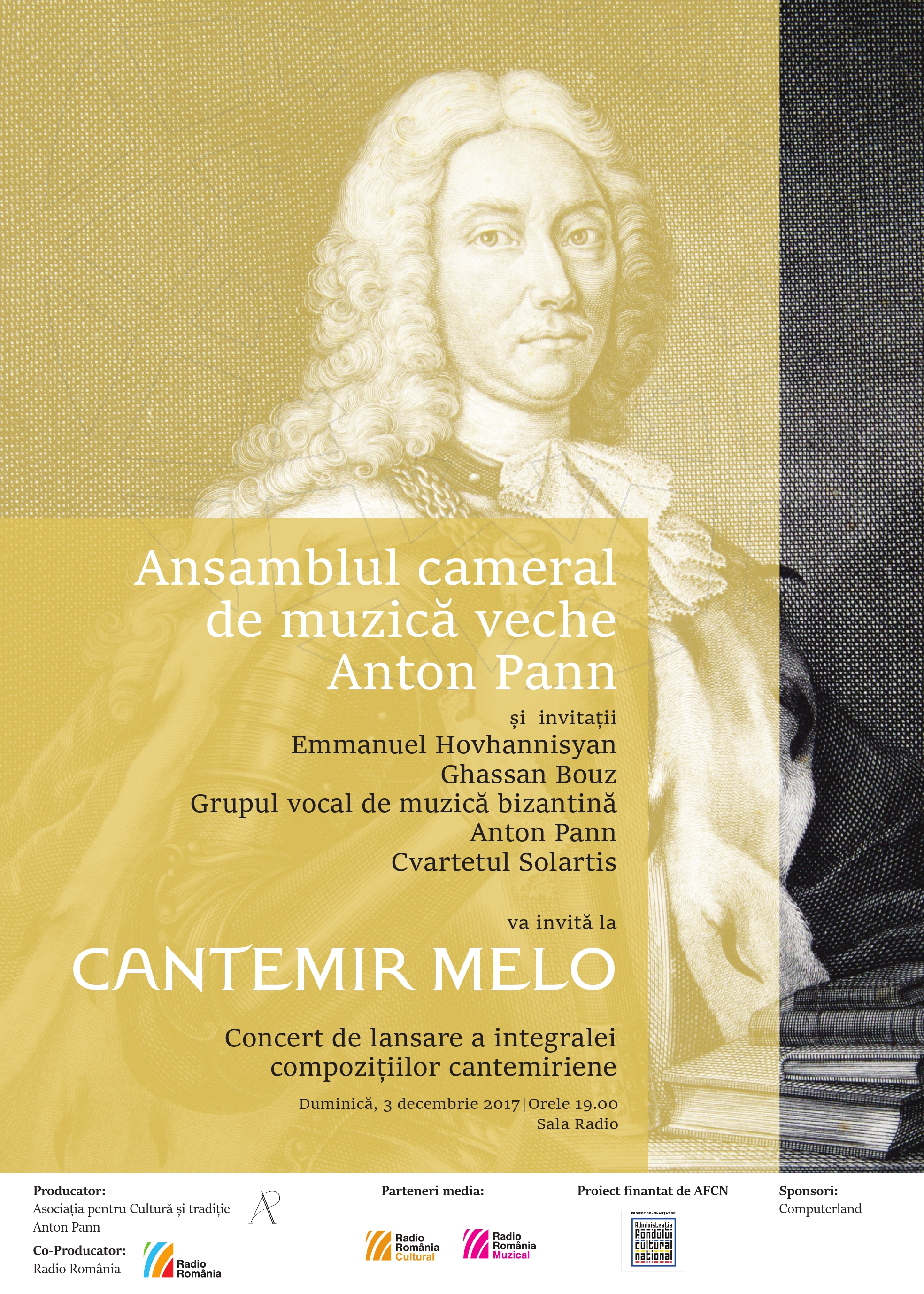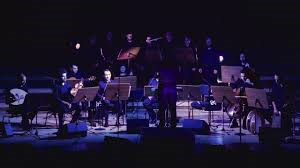CANTEMIR MELO – Integral Cantemirian compositions – Anton Pann Chamber Ensemble of Early Music
Prince Dimitrie Cantemir (1673-1723) represents a unique figure for Eastern European culture: personality of Romanian and universal culture, Dimitrie Cantemir remained in history as a polymath intellectual who marked his passage through life with works written in different fields.
As the son of the voivode of Moldavia, he spent a large part of his youth in Istanbul, where, in addition to learning the languages of the time, he studied music with the best performers and composers. During this period he became the main theoretician of the Turkish language and one of the great composers of the time. His treatise "Book of the Science of Music" (ca. 1700) includes a system of musical notation involving the Ottoman alphabet, with the help of which he was able to transcribe 353 pieces from the Court's instrumental repertoire, as well as his own compositions. Based on recent research (W. Feldman and O. Wright), 18 compositions have been identified as definitely belonging to Dimitrie Cantemir - these being the ones included on the two CDs performed by the Anton Pann Chamber Ensemble of early music .
Thus, taking into account the Romanian cultural specificity of the Byzantine style and the fact that Dimitrie Cantemir himself studied at the school of the Ecumenical Patriarchate in Constantinople, where religious music of the Byzantine tradition was also taught, in the analysis and interpretation of Cantemir's compositions, the compositional principles specific to this were used geographical space, combining the Byzantine, Romanian and Ottoman languages, with the idea of helping the music-loving public to mentally visualize the soundscape of Eastern Europe from the 18th century.
Although this approach is an academic, research one, a sound accessible to the public has been built, resulting from carefully chosen instrumental timbral combinations. This is how it was decided to use some oriental instruments such as oud, kanun, daire, bansuri, duduk, and instruments specific to western orchestras: violin, cello, flute, the resulting melodious music can be considered representative of the multiculturalism of the Romanian Principalities and of present-day Romania.
In this project, the photocopies of the Cantemirian manuscript were used, as well as the transposition variants from the notation created by the prince into the western (guidonic) notation. The easiest source (melodically) was that of Owen Wright, who made his transcription with Eugenia Popescu-Judetz's version among his sources.
The entirety of Cantemiri's compositions appeared on a double CD, whose elaborate details recall the prevailing aesthetics of the Romanian Principalities in the 18th century: graphics inspired by oriental architectural lines, stamping on the cover with gold leaf, stitching on the spine to remind of the books of the Middle Ages . The CD also contains a brochure that points out the musical evolution of Dimitrie Cantemir, as well as the historical context of his time.
Cantemir Melo launch concert at Sala Radio on December 3, 2017, the Anton Pann Early Music Ensemble (Constantin Raileanu – voice, percussion – drums, kanun, conductor and orchestrator, Sabin Penea – violin, Alexandru Stoica – oud, Issam Garfi – bansouri and ney flute, Andrei Nitescu – cello and Oana Benko – video projection), were joined by special guests: Emmanuel Hovhannisyan (Armenia, duduk) and Ghassan Bouz (Lebanon, percussion), and in the second part of the concert, the Group by Byzantine Music Anton Pann, Adrian Flautistu (double bass) and the Solartis Quartet.
This album is also promoted in the countries where Dimitrie Cantemir has been appreciated over time (Turkey, Russia, Greece, France, Germany, England, Holland, Sweden, Italy), aiming to promote Romanian personalities in general, and the musical work of Prince Cantemir in particular.
Computerland Romania supported the Anton Pann Early Music Chamber Ensemble in its chosen mission: rediscovering the beauty of Romanian early music and sharing it, with joy, to the music-loving public and beyond.
This album is a tribute to Dimitrie Cantemir and the Romanian culture, enriched by the creative work submitted by him throughout his life, so that it can be considered an ideological precursor of the Great Union of 1918.


